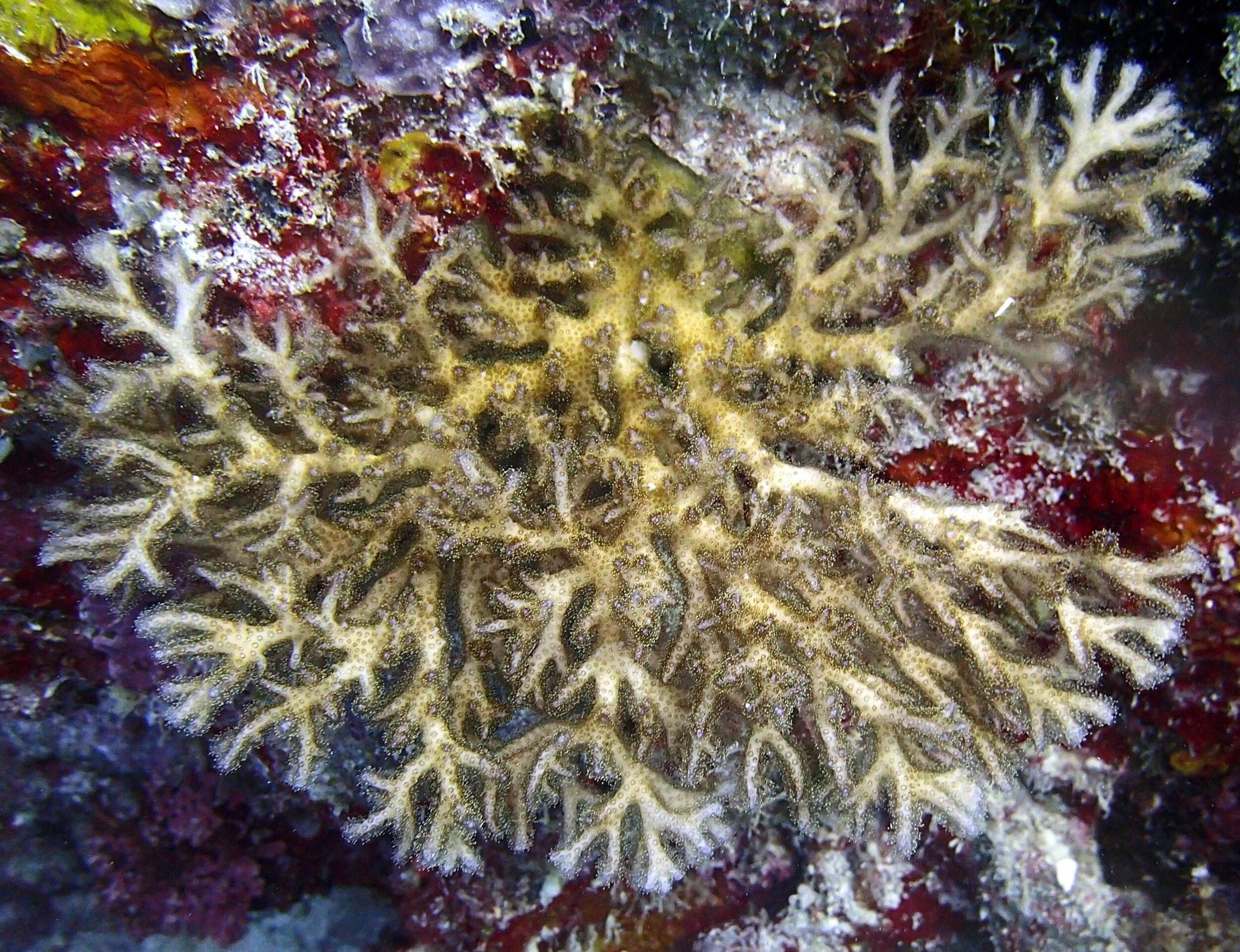Pocillopora acuta
During the quarantine period, I finally had the chance to look at some data I had stashed away for a rainy day, specifically the results of a series of night dive studies we undertook in New Caledonia as part of the Living Oceans Foundation’s “Global Reef Expedition.” This was the first mission in which I sampled corals around midday, tagged them with a glow stick, and then returned at night to better understand diel oscillations in molecular physiology in the model reef coral Pocillopora acuta.
Right away from the principal components analysis (PCA) you can see some separation across sampling times (red squares=morning, blue triangles=afternoon, and exes=night). The right columns are instead the results of discriminant analysis, which tries to find the best solution leading to parsing by the experimental factor of interest, time in this case. In general, only when the endosymbiont proteins were included can you see an obvious (and statistically significant) sampling time effect.
currently in review in Atoll Research Bulletin
When you look at the individual response variables I measured in the sampled corals, you can see some pretty compelling light effects, particularly in Symbiodinaceae gene expression. When the trend is included in the panel, that means the statistical test (Wilcoxon) was significant.
Nothing Earth shattering, but I think these data are important because of the locale; these corals were sampled from some of the most remote, pristine reefs on the planet. This allows to understand natural variation in coral physiology and specifically how it changes over time in environments that have not generally been destroyed by humans. I therefore these data as sort of a “current baseline” (well, current=late 2013) against which future change can be assessed. Email me (abm64@miami.edu) if you want to discuss this or check out the data here. For the entire dataset (including multiple coral species), check out the main New Caledonia page.
Pelotas Atoll





